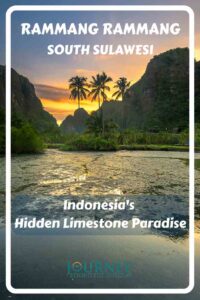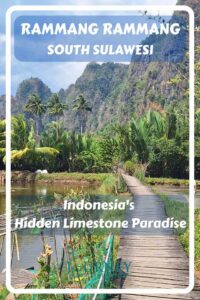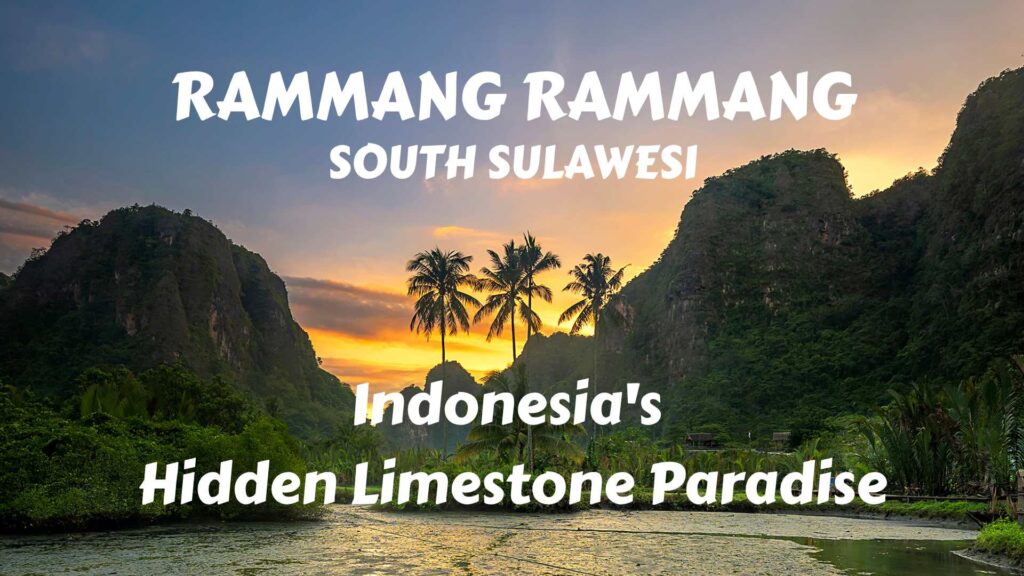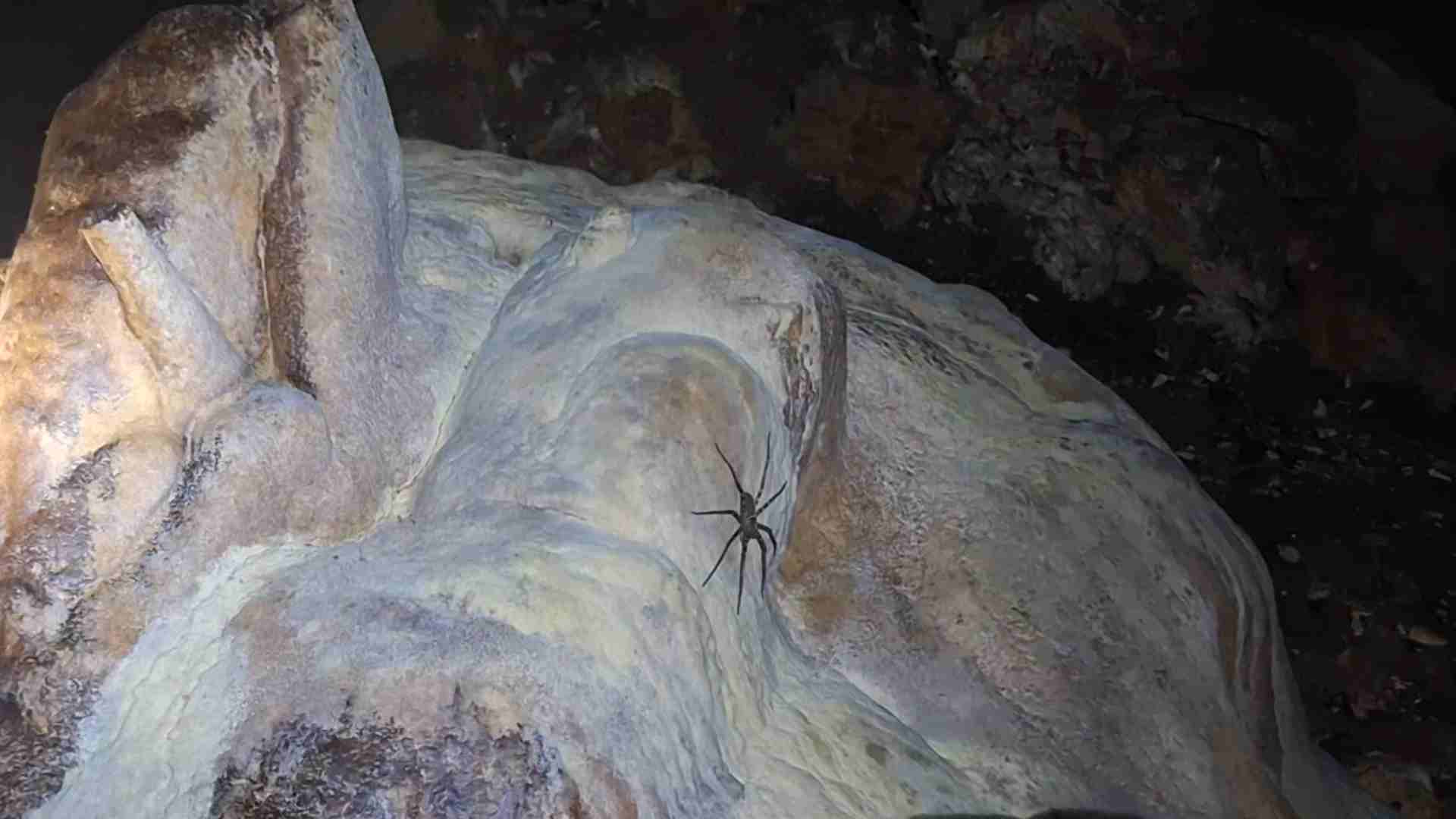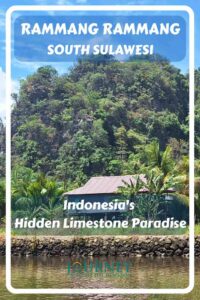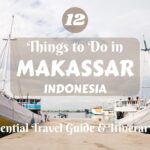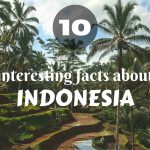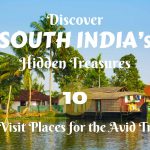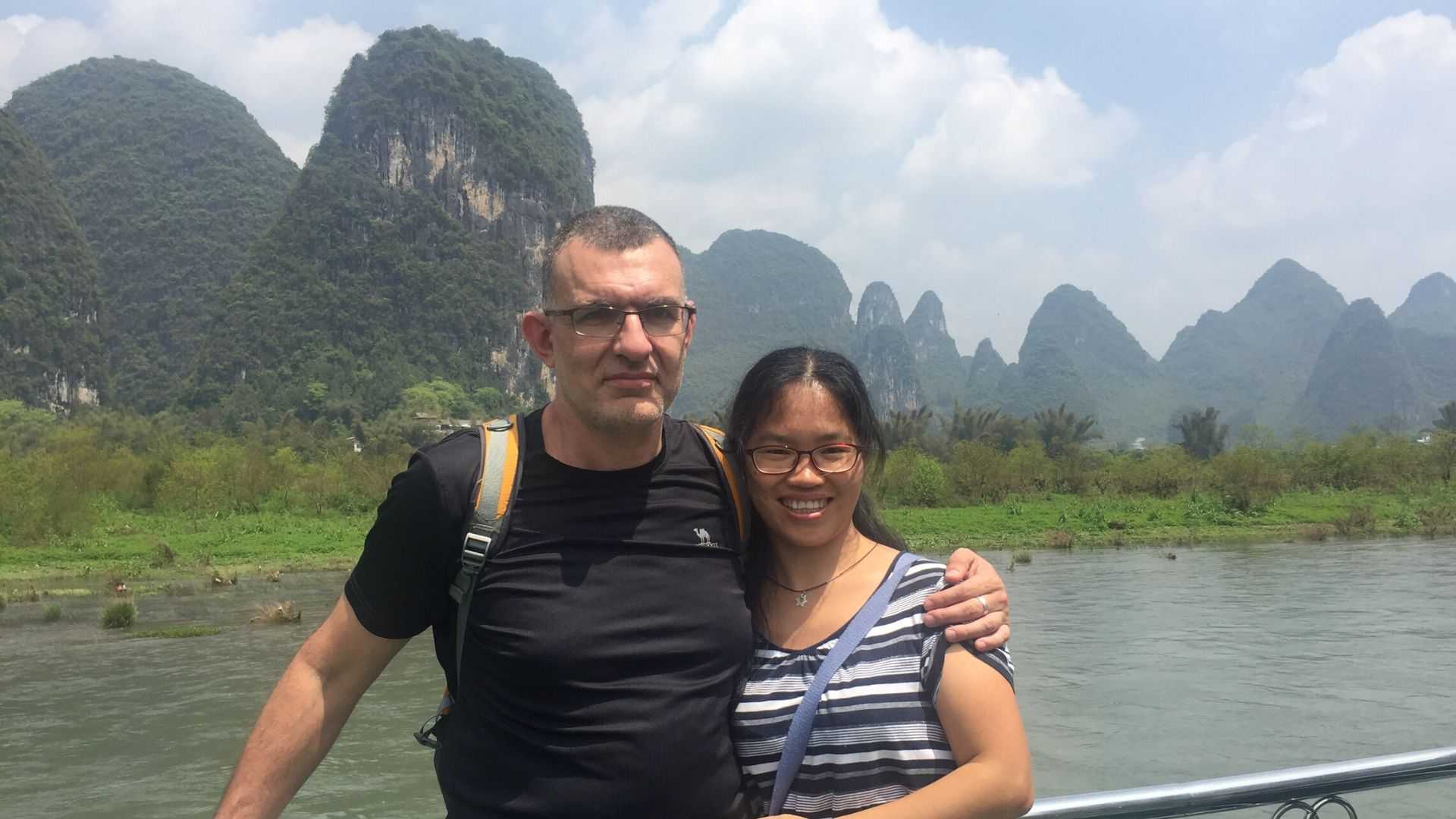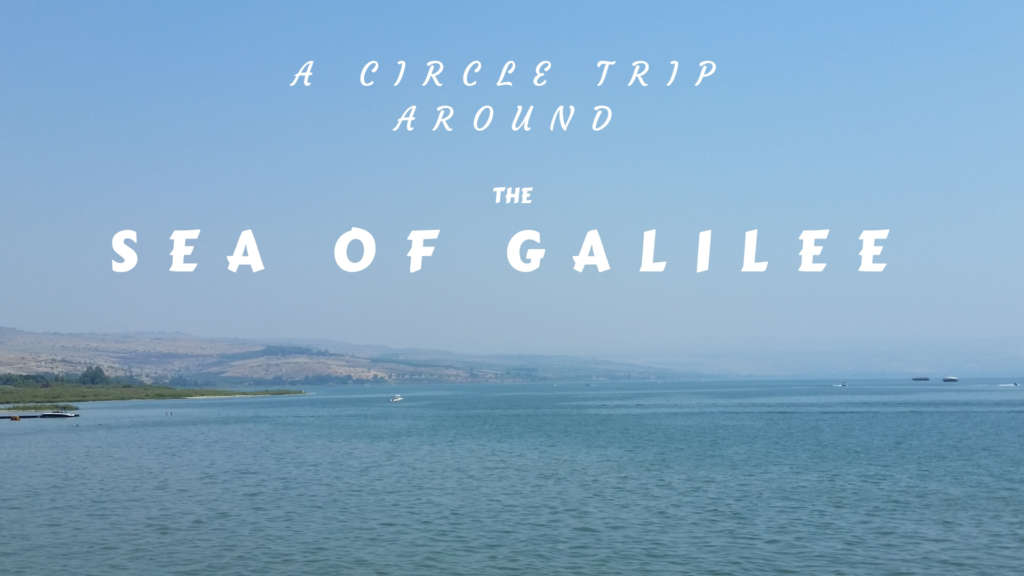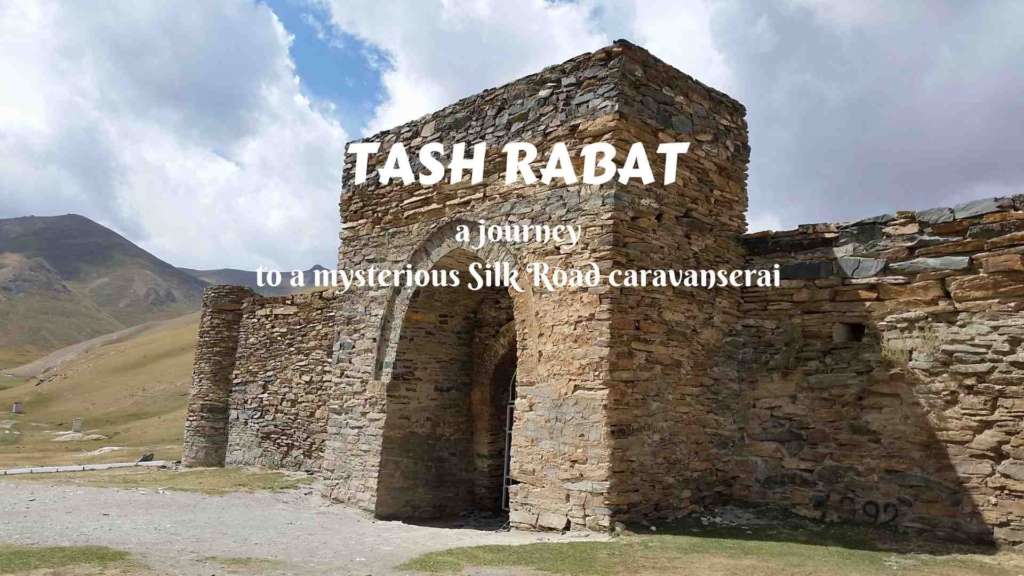Dreaming of a travel destination that feels truly off the beaten path, far from the well-trodden tourist trails? Tucked away in the lush landscapes of South Sulawesi, Indonesia, lies Rammang Rammang – a breathtaking limestone paradise that promises an unforgettable adventure. Often overshadowed by more famous Indonesian spots, this enchanting karst region is a hidden gem waiting to be discovered, offering a serene escape amidst towering rock formations, mysterious caves, and a tranquil river journey that transports you to another world.
Table of Contents
About Rammang Rammang
Have you ever been to Guilin, China? Or have you seen some impressive Chinese pictures with thin and tall hills, bamboo, and a curving river between them? You can find something similar in Indonesia, specifically on Sulawesi Island, with a slightly different landscape, featuring coconut palms. This place is called Rammang Rammang, where you enter a fantastic picture within a tropical paradise.
Some geography
Let’s open the satellite map of Indonesia, and zoom in on the southern peninsula of Sulawesi Island. Then, let’s focus on the area northeast of Makassar. Here, you can see a dark green area, which is mixed with urban and agricultural land. If you proceed to zoom in on the dark green area, you will notice that it is not smooth but highly rough, resembling a dense green rash. This is what a karst hill area normally looks like from space.
Karst terrains are made mostly of limestone-type rocks. This material is highly interactive with water, and this interaction creates amazing rock formations like karst hills, sinkholes, caves, stone forests, and more. This is what has been formed here, in Rammang Rammang. And it normally happens in a wet climate, with a lot of water, as it is here.
The main terrain difference between the karst hill of Rammang Rammang and the famous karst hill areas in Southern China is that here the hills are closer to each other. They look like green “walls with soft teeth” from the nearby lowland. These walls are cut by local valleys with rivers, and in these places, the landscape is even more amazing.
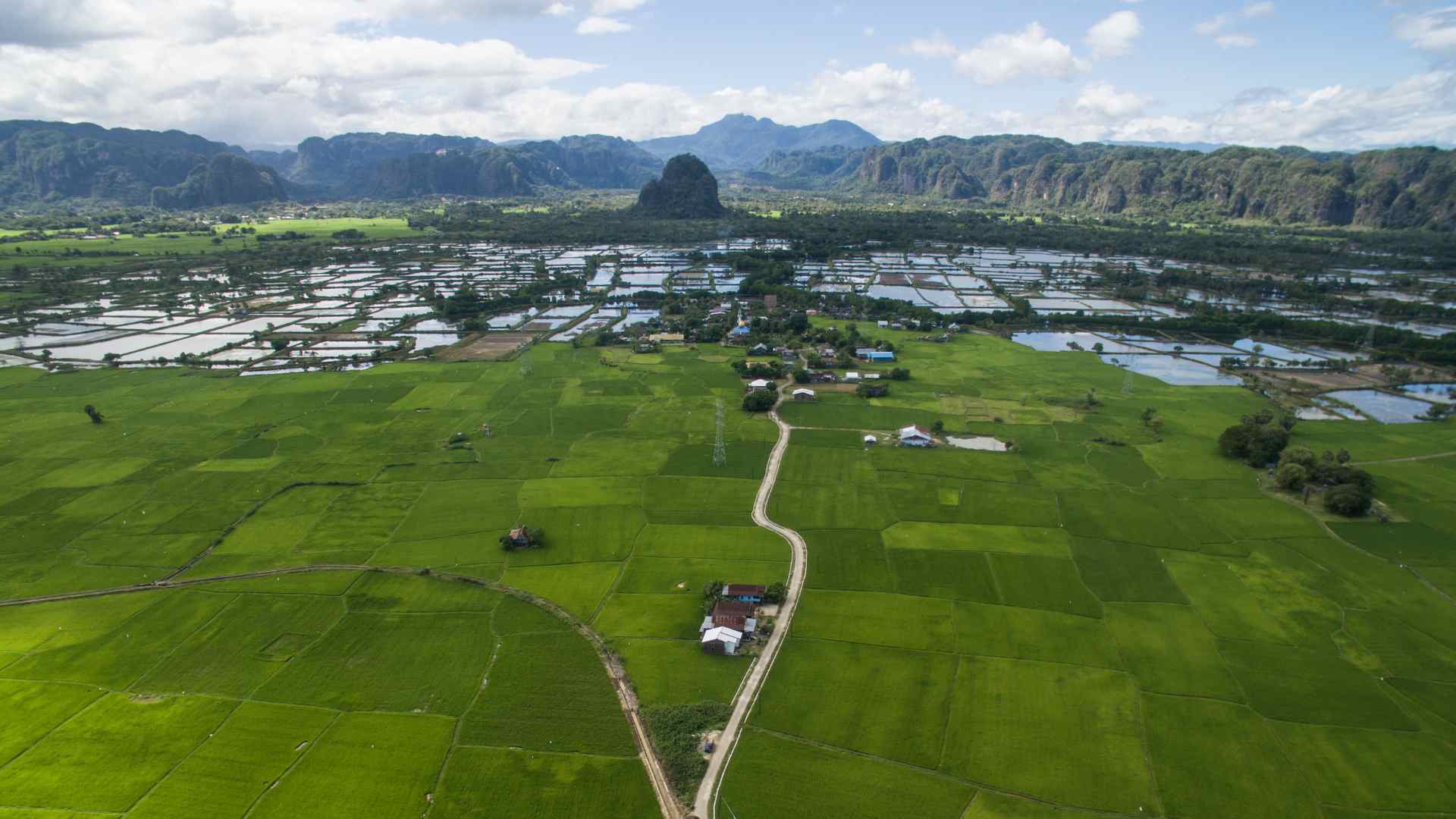
On top of that, the area is full of caves, picturesque villages with local culture, and secrets from the ancient past…
So, let’s look at the history.
Some history
If you visit some of the caves in the karst hill area, you can see paintings on the cave walls. According to scientists, these paintings date back more than 40,000 years and are considered some of the oldest cave paintings in the world. Today, they can be seen in the prehistoric archaeological complex Leang Leang.
Nobody knows who made these paintings. The people who made it disappeared long ago. The area has seen the whole human history of South Sulawesi- the coming of the Austronesian people, the founding of the first villages, chiefdoms, the small kingdoms after them, and the larger kingdoms that became sultanates (like Gowa Sultanate), a few hundred years ago.
Later, the Dutch came. They gradually colonized the whole of today’s Indonesia. And in the middle of the 20th century, Indonesia gained its independence.
Meanwhile, the karst hills and the nature on and around them just “watched” silently what humans were doing, without interfering in anything. It wasn’t until they were discovered by tourism in recent years that they became one of the most significant destinations in Indonesia, apart from the popular Bali.
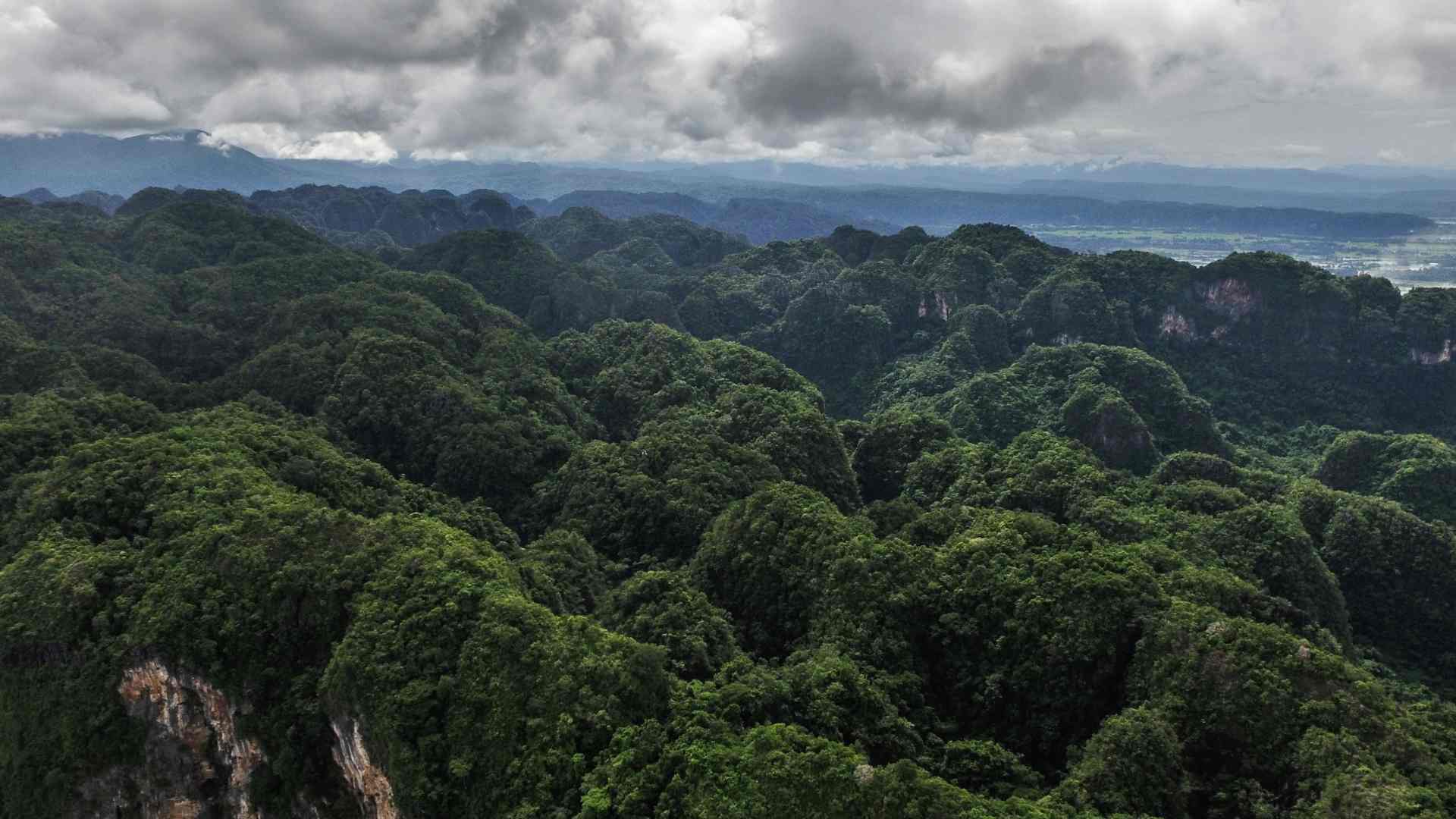
Our trip to Rammang Rammang
All of the above were the reasons why I (Krasen Jelyazkov), Ying Ying, and our children decided to include Rammang Rammang in our South Sulawesi trip. We rented a car from Makassar, which allowed us to visit the most important points of interest in the karst area. We also left the car at one of the piers of the river and went on a river boat to the most attractive place in the area- the valley of Rammang Rammang, surrounded by a wall of karst hills, with the village in the middle of it.
But let’s go explore it more, in detail.
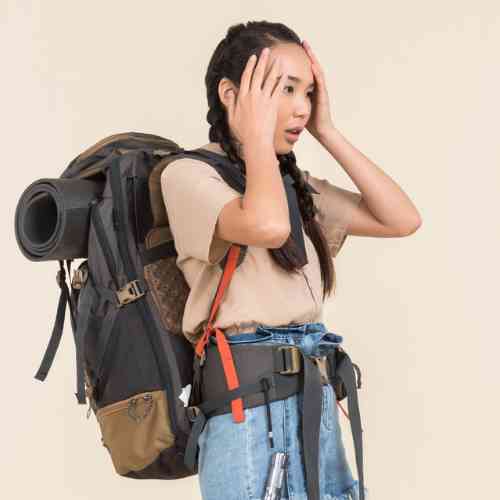 Exploring the Earth is fantastic! However, there are various hidden dangers that may ruin your journeys. Don’t allow that to happen, or at least reduce the consequences as much as possible!
Exploring the Earth is fantastic! However, there are various hidden dangers that may ruin your journeys. Don’t allow that to happen, or at least reduce the consequences as much as possible!
Include a travel insurance as a part of your trip preparation by pressing the button below:
How to explore Rammang Rammang
The main “core” of the karst area, which is the most beautiful and most visited point, is the valley of Rammang Rammang. It is connected to the fields outside of the karst area by a river, which is a part of the Sungai Puteh river system. This river is used as a water canal for boat trips to Rammang Rammang village.
However, Rammang Rammang is only a small place within a large karst hills area called the Maros-Pangkep Karst Region, recognized as a UNESCO Global Geopark, today included in Bantimurung-Bulusaraung National Park. This area can be divided into several groups, separated by river valleys. The hills are covered by thick tropical rainforest, and the valleys are full of villages and agricultural areas. In some places, roads cross through the mass of hills between two valleys, but in general, going “in the middle between the hills” can be challenging if you can’t find proper wild trails.
Although the main attraction is Rammang Rammang village and the river leading to it, aside from the natural, non-touristy, local village areas and wild hills, there are some other minor points of interest. The most important of them is Leang Leang Archaeological Park, presenting caves with prehistoric traces.
Besides Leang Leang, you can find many other caves (called “leang” in Buginese), a small Archaeological Museum (called Taman Purbakala Sumpang Bita), as well as local relaxation areas (“normal” parks).
But if you want to explore the Maros-Pangkep Karst Region, first you must start with Rammang Rammang.
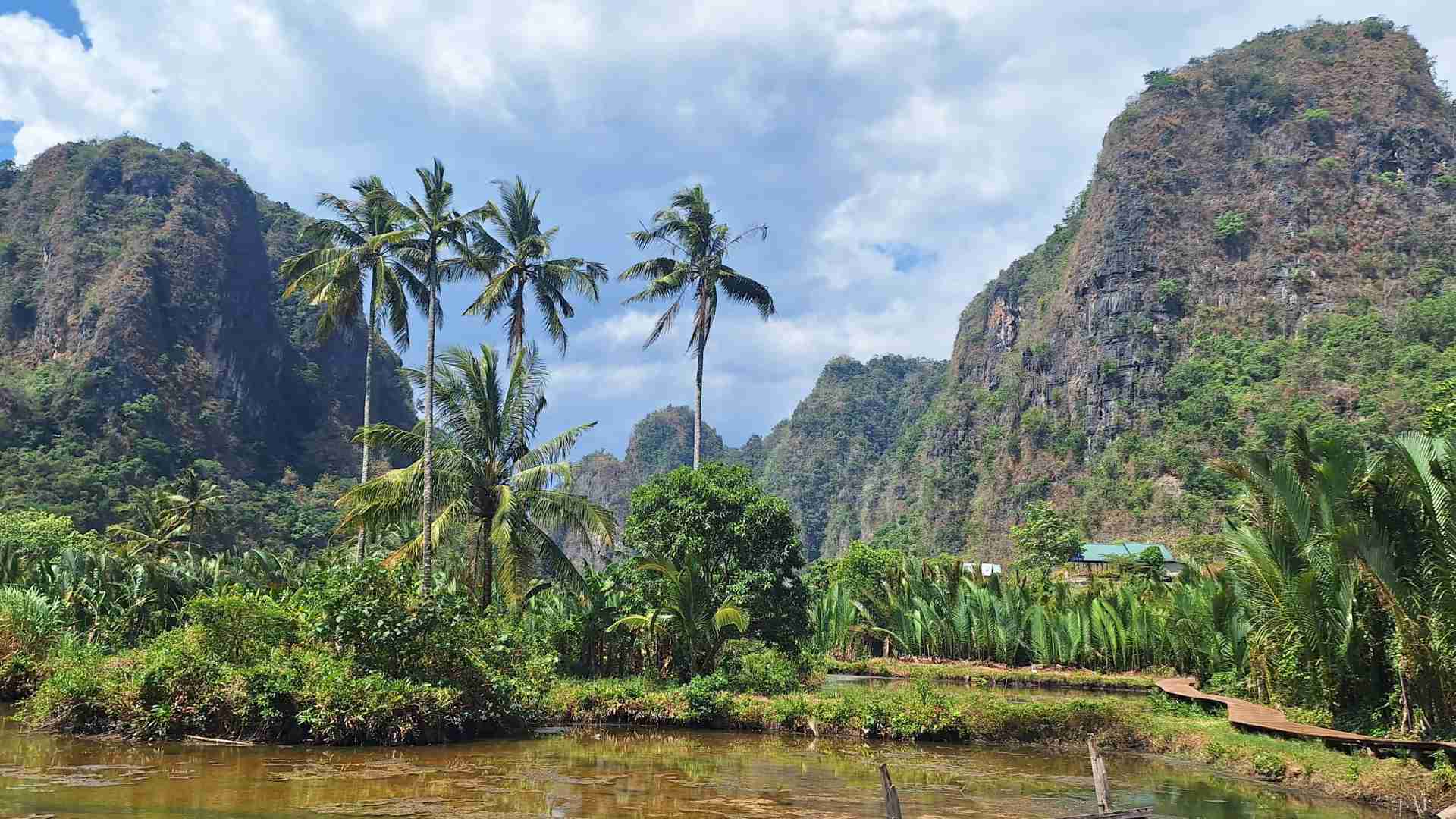
A Rammang Rammang tour
The normal, “classical” stroll of Rammang Rammang starts from one of the two piers on the Rammang Rammang’s branch of Salo Pute (Sungai Puteh) River.
A boat tour from Pier I
The first pier is called Dermaga I Rammang Rammang. It is located just beside the main road connecting the villages at the foot of the karst hills area, about a kilometer east of the main road between Makassar and Pare Pare.
This is the old pier used mostly for rental boats only. If you go there by rental car (as we did), you can leave your car in the parking lot at the pier, buy some fresh water and other snacks, and enjoy the boat ride.
You pay for the whole boat, and the prices are as follows:
- 200,000 IDR for 1 to 4 persons
- 250,000 IDR for 5 to 7 persons
- 300,000 IDR for 8 to 10 persons (a bigger boat).
Boats and the captains wait for tourists; you just go there, choose a boat, pay, and go. The price is for the entire boat trip: they take you to the village, you can explore it, relax, and wander there as long as you want, then just jump on the boat and go back to Pier I.
A boat tour from Pier 2
Pier 2 is the new pier, located approximately in the middle of the distance between Pier 1 and Rammang Rammang village. It is established for organized tours, so although the distance is shorter, prices for the boat trips are higher- between 300,000 and 500,000 IDR per boat. It is because they include a full package- they have a guide who leads tourists around the wonders of Rammang Rammang, and usually include lunch and other extras. These boat rides are usually part of a whole tour from Makassar.
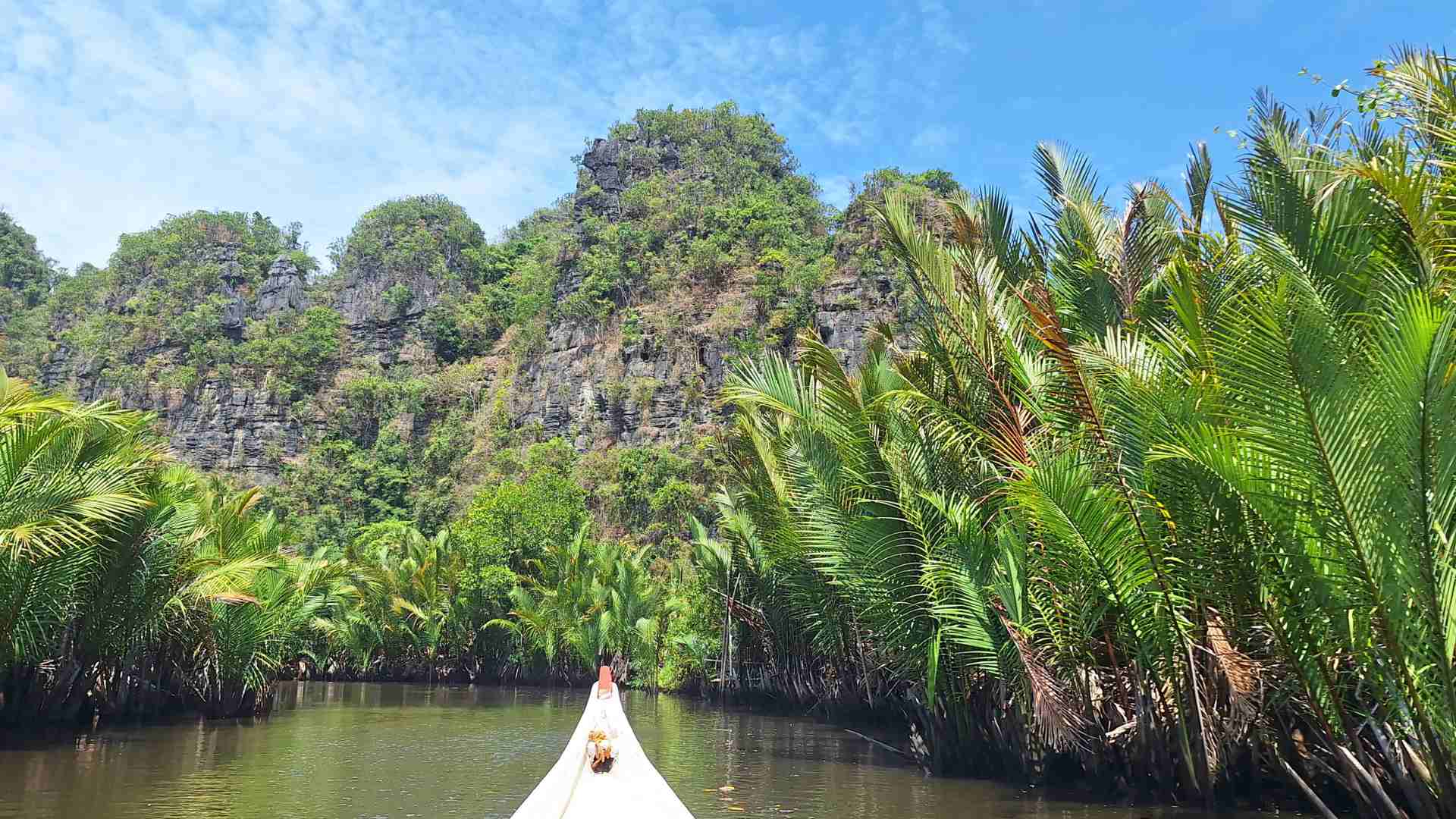
Rammang Rammang valley and village
The village of Rammang Rammang, also known as Kampung Berua, is located at the final point where boats can float on the river (further against the current, the river turns into a stream, too narrow for boat riding), and in the middle of a beautiful, fairy-tale valley, surrounded by karst hills from all sides.
Once you arrive there, you pay a small entrance fee: 10,000 IDR at the pier, and enter inside.
The valley of Rammang Rammang is filled with agricultural rice ponds. Village houses are scattered around, and trails between the ponds lead to the houses and the neighboring points of interest- mostly caves.
There is a small restaurant with some basic meals not far from the pier. And there is a guesthouse behind it, called De Serang Homestay (the cheapest accommodation option in Rammang Rammang). From here, you can walk on the established trails around the village.
Just relaxing and walking around the village is wonderful. You are immersed in a tranquil fairy-tale scenery “far from the world” (no cars go there). But if you want something more, you can go to the nearby caves around Kampung Berua.
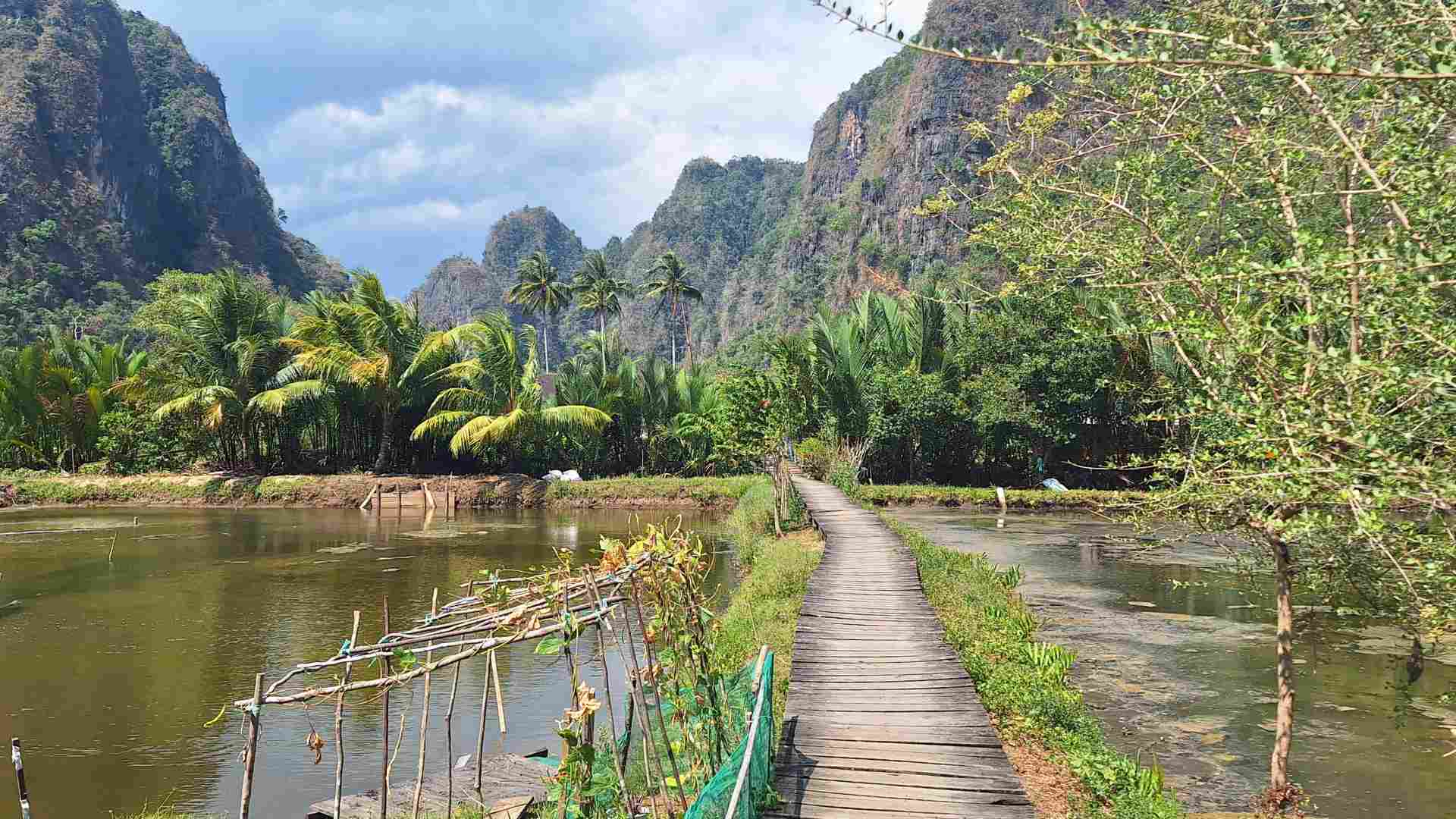
Rammang Rammang caves
Several small caves are located in different locations around the village of Rammang Rammang. Trails lead there and you can visit the caves, paying small entrance fees (usually in the houses at the beginning of the trails- these fees also include headlamps).
Four small caves are located at the southeastern end of the village. They are Goa Karst (Karst Cave), Goa Kristal (Crystal Cave), Goa Purba (Ancient Cave), and Goa Puncak (Peak Cave).
The first one, Goa Karst is a narrow cave, and you can usually penetrate about 20-30 m inside. Goa Kristal is partially open above and is more like a “mini canyon”. Goa Purba is a bit high on the hill, and you can find traces of prehistoric humans there (not easy to recognize them, but you can try). Finally, to reach Goa Puncak, you have to hike about 10-15 minutes on a steep trail. It is a beautiful small tunnel (with two exits).
There is another cave in the northeastern part of Rammang Rammang, called Goa Kingkong. Another small entrance fee is required at its entrance- 10,000 IDR. Its name comes from a rock formation that looks like the famous giant gorilla.
When you enter these caves, you can see large spiders inside. They are Huntsman Spiders, and in general, they are harmless. Despite what they look like (flat, with long legs), they just stay still and don’t move when you pass by them. Even if you try to touch them, they would prefer to run away. But even if they bite (which is seldom), their venom is too weak for humans.
More caves around Rammang Rammang
The caves mentioned above are only a small number of caves located very close to the village of Rammang Rammang. But there are more than 400 caves and cave-like formations in the whole Maros-Pangkep Karst Region. So, let’s mention some of the more significant ones:
- Goa Kunang Kunang (Fireflies Cave). It is located about 10 minutes away from Pier II. There are no fireflies inside, but there are crystals glimmering like fireflies when you point your light at them. Entrance fee: 10,000 IDR (but if you want your boatman to stop there, he would require 100,000 IDR).
- Goa Bulu Barakka. A small cave in the nearby area with prehistoric handprints.
- Goa Telapak Tangan. Another cave with prehistoric handprints.
- Caves like Goa Jaka, Goa Pasaung, and more.
Now, let’s move to another corner of the Maros-Pangkep Karst Region for the second famous spot in the karst area- Leang-Leang.
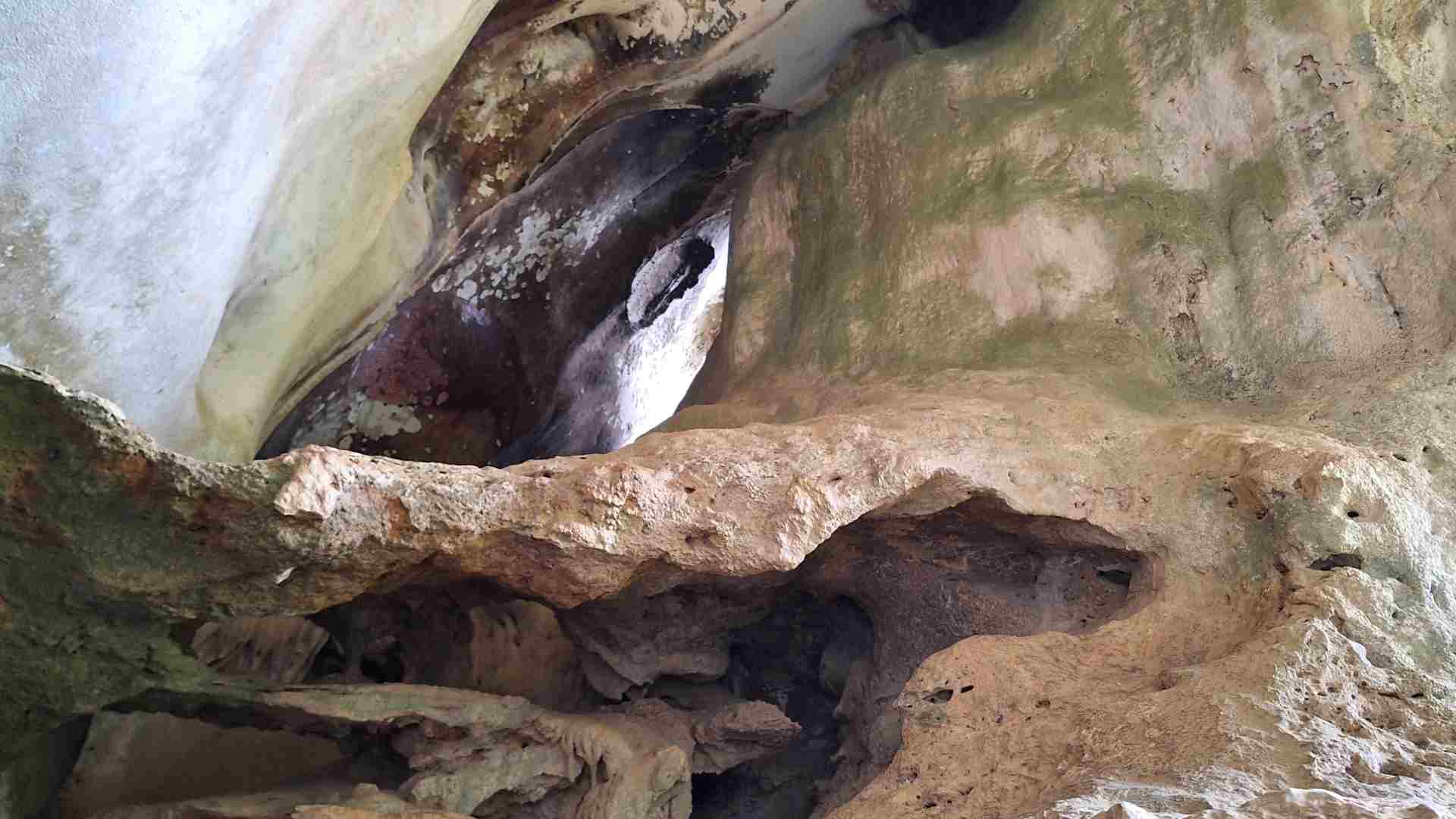
Leang-Leang Archaeological Park
This is an important spot in the area, located about 11 km southeast of Pier I for Rammang Rammang. It presents more karst hills and more caves, but the main highlight of the park is the prehistoric human traces found in the caves.
Leang-Leang Archaeological Park itself is a designed tourist area. It occupies an area with steep karst hills (with several caves in them), and a flat area at the foot of the hills with a small stone forest. When you enter, you will see a visitor center and other facilities, with the stone forest behind them. Several trails pass through the stone forest and lead to the hills with the caves.
The most significant caves in the park are Goa Pettakere, Goa Leang Bulu Sipong 4, Goa Leang Tedongnge, and Goa Jarie.
These caves are famous for some of the oldest human paintings and other traces of human presence in the world. According to scientists, these traces date from 45,000 to 51,000 years ago. Some of the paintings present images of pigs and babirusa (local pig-deer, again a kind of pig). Traces also include handprints, stone tools, food remains, and more.
When you are at the site, if you want to visit the caves, you usually have to wait for more tourists to form a group. Then, the managers come and open the caves.
Entrance fee: 20,000 IDR for foreigners, 5,000 IDR for Indonesians.
Working hours: 7:30 am to 5:00 pm
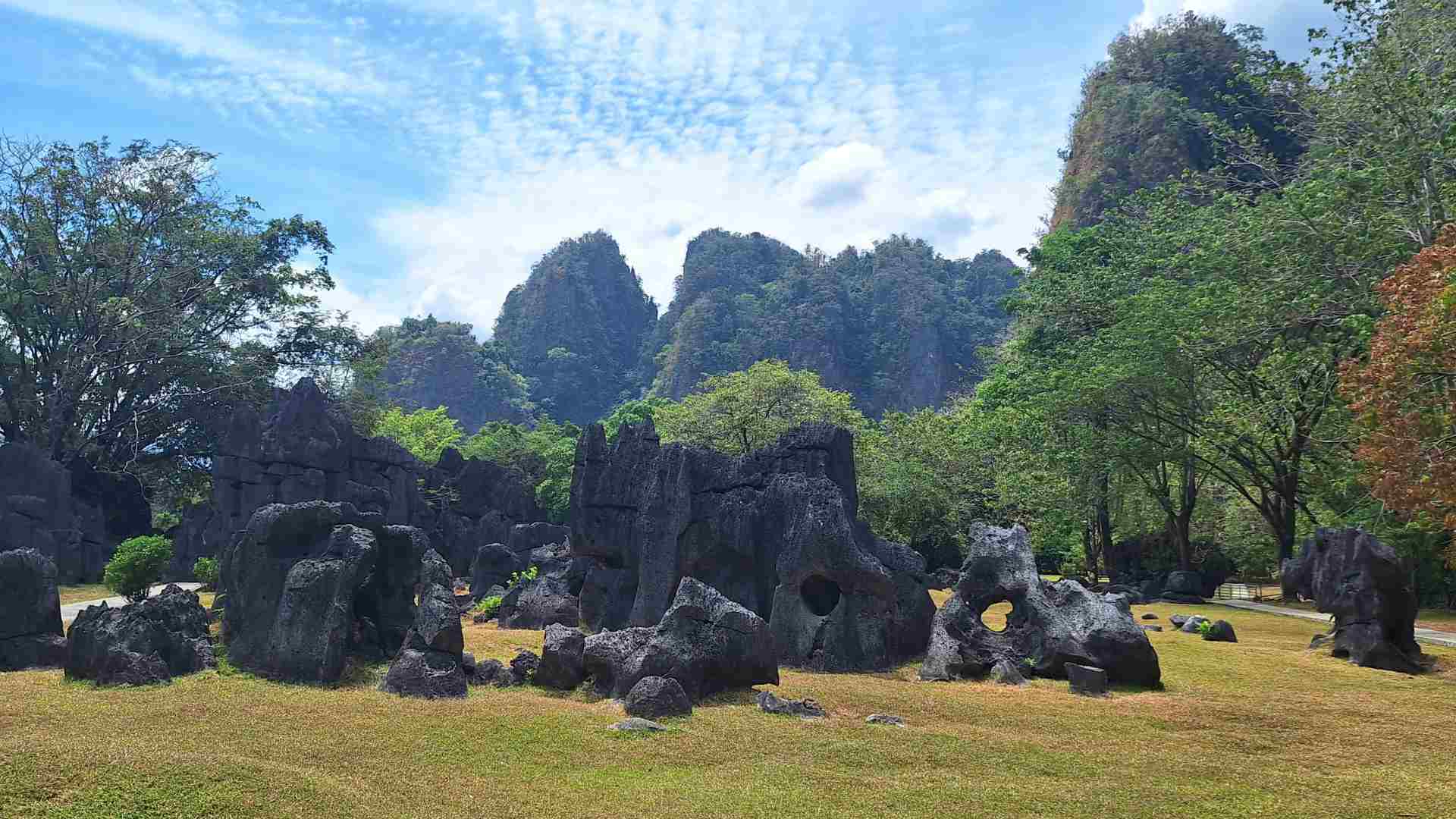
Taman Purbakala Sumpang Bita Archaeological Park
This is a smaller version of Leang Leang. It is located about 16 km north-northeast of Leang Leang, and here again, you can see prehistoric cave paintings and stone tools in a few small caves. The largest of them is Sumpang Bita, where you can find most traces, again dated to about 40,000 years ago.
Entrance fee: 5000 IDR
Working hours: 8:00 am to 5:00 pm
Useful tips
Rammang Rammang and its surroundings are an astonishing place. But like every point of interest in the world, you have to plan in advance to arrange your trip better.
Transportation
The main starting point for visiting Rammang Rammang is Makassar. Public transport to the destination is a bit complicated and not so convenient, but it still is an option.
You can go to Daya Bus Station in Makassar and take a pete-pete- a blue minibus (van) to the area around Rammang Rammang. It doesn’t go there but stops in Bosowa Semen factory (sorry, but these minibuses are not for tourists), 5 km from Dermaga (Pier) I of Rammang Rammang. From the factory, you can walk for about an hour, or take a taxi to the pier. You can find pete-pete also from Bumi Permata Sudiang in Makassar, again to the same factory.
Using Grab can be an option too, but only from Makassar to Rammang Rammang. If you want to return, it will be difficult to find Grab there.
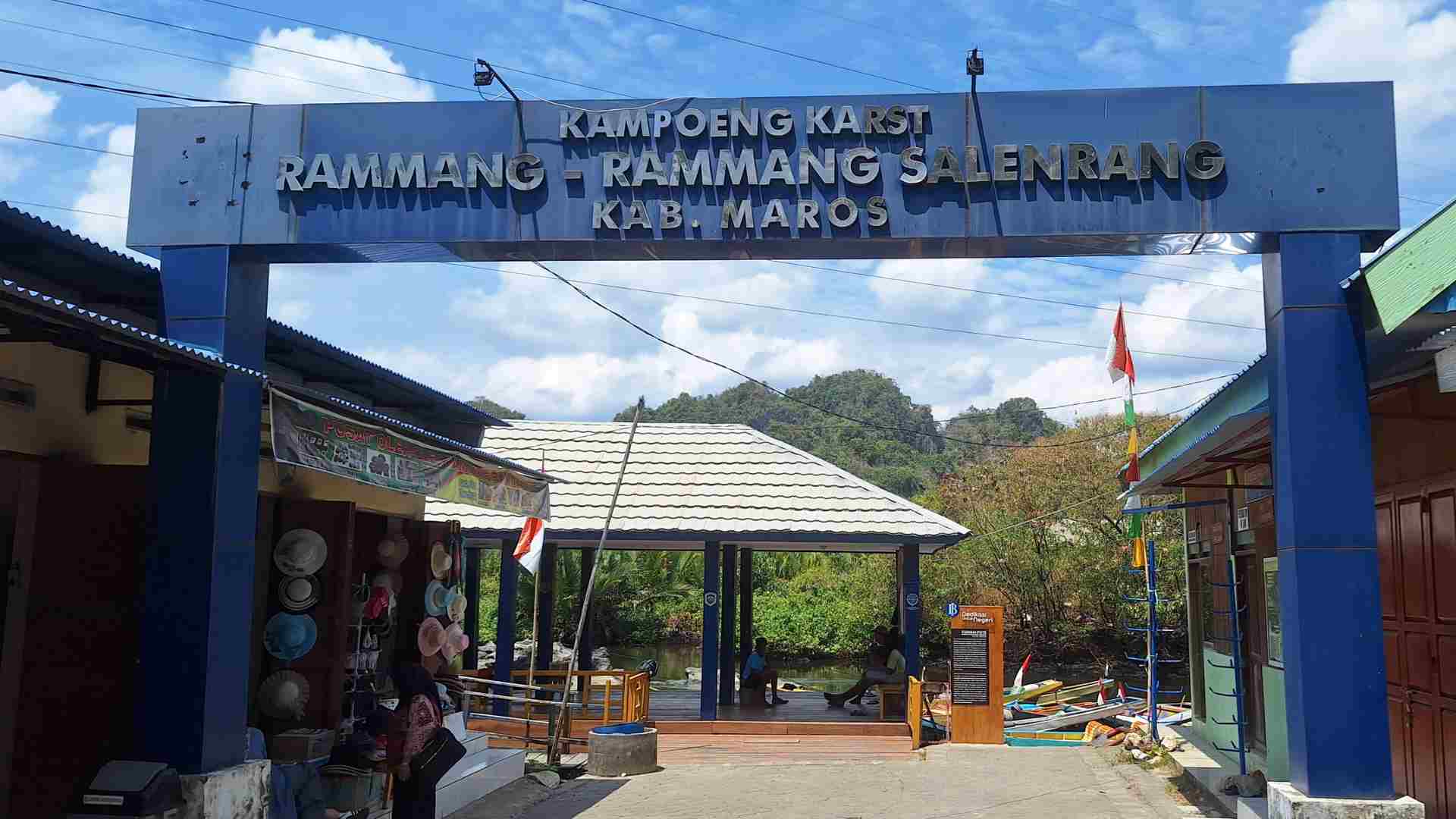
More transportation options
The remaining options are a rental motorcycle, a rental car (with or without a driver), and an organized tour.
You can rent a motorcycle (usually for 150,000-200,000 IDR per day) and make a tour to Rammang Rammang and Leang Leang. But there are two problems: first, leaving your motorcycle in the parking lot while you go on a boat ride can be a bit risky. And second, traffic in Makassar can be challenging, especially if you haven’t gotten used to left-side driving.
Rental car with a driver is a good option too (you can ask the manager of your hotel in Makassar), but it can be expensive. Expect something like 800,000 to 1,000,000 IDR or even more, not including the driver’s meal.
You can also rent a car without a driver. The best rental car company is located HERE and it is called TRAC Rental Mobil. But in this case, our advice is to rent a car for a few days and make a longer tour including Rammang Rammang, Tana Toraja, Lake Tempe, and more places on the way, not just Rammang Rammang.
That’s what we did- we rented a car from TRAC Rental Mobil by the Traveloka platform, they gave us a very good and comfortable car, and we used it for a 7-day tour. It was very convenient because we could easily visit Leang Leang and Rammang Rammang. Finally, we returned the car, the staff was very friendly and helpful, and even gave us a small gift.
Finally, you can just join a tour. You can find a lot of tours to Rammang Rammang. They are usually 1 day long and include the most significant points of interest in the area.
Accommodation
Spending a night in Rammang Rammang is a nice experience. We wanted to do it, but all the properties in the area (guesthouses and homestays) were full. Although the place is gaining popularity recently, there are not too many options for spending the night.
You can find several guesthouses in the villages near Pier 1 and Pier 2, like Nasrul House Homestay, Rammang Rammang House, and a few more (some of them are not even presented on Google Maps, so you can ask the locals).
Or, another, even more exciting option is to spend the night in one of the four guesthouses in Rammang Rammang (Kampung Berua) village. We already mentioned De Serang Homestay. Another homestay, exactly beside De Serang, is Kampung Berua Homestay. Both are excellent opportunities to spend the night in serenity and to watch the contours of the karst hills under the moon and the stars.

We left Rammang Rammang with our car and proceeded on our trip to our next destination- Tana Toraja, the home of one of the most unique cultures in the world. As for Rammang Rammang- for us, it was more than just a destination; it was an immersion into a landscape where nature and history intertwine in breathtaking ways. From the serene boat ride gliding past towering limestone walls to the quiet charm of Kampung Berua and the ancient whispers within its caves, every moment here gifted us a unique connection with Indonesia’s untouched beauty.
Take a look at this video about Rammang Rammang below:
Like it? Pin it here⇓! Follow us in Facebook, X and Instagram!
